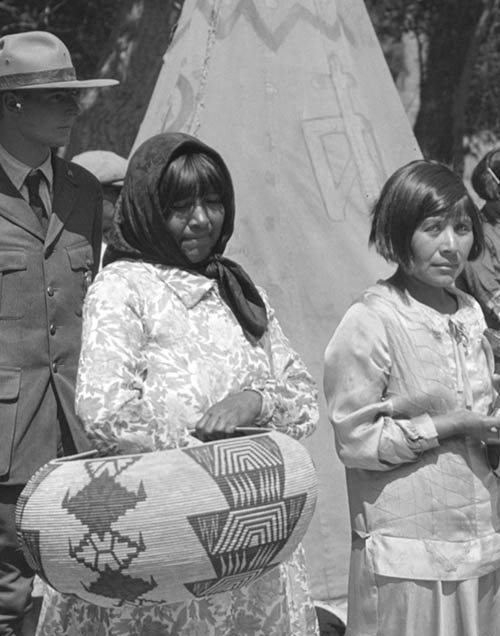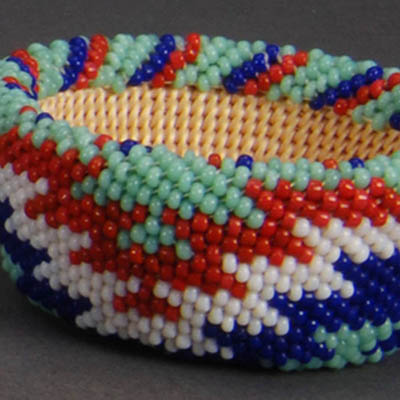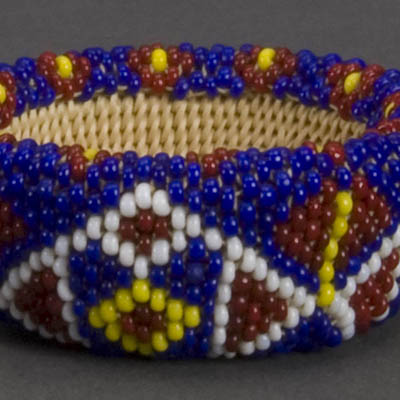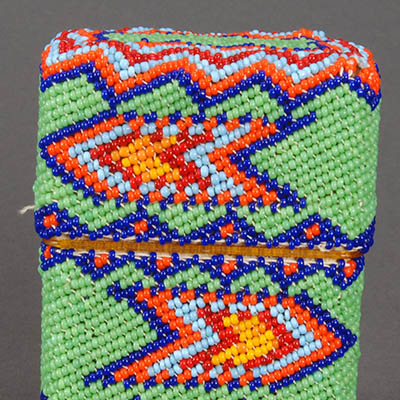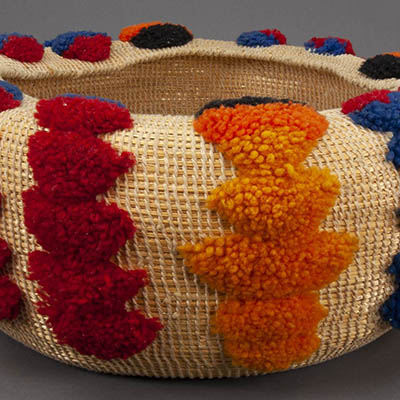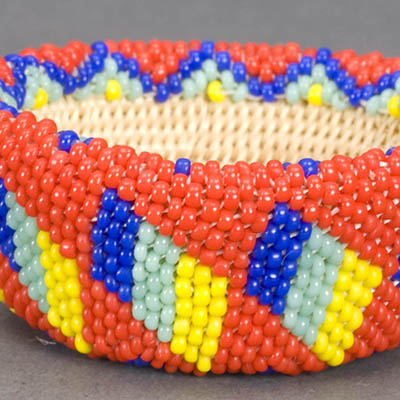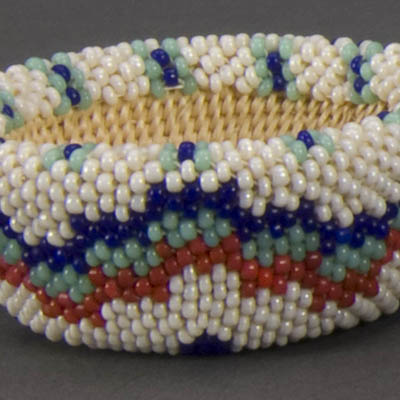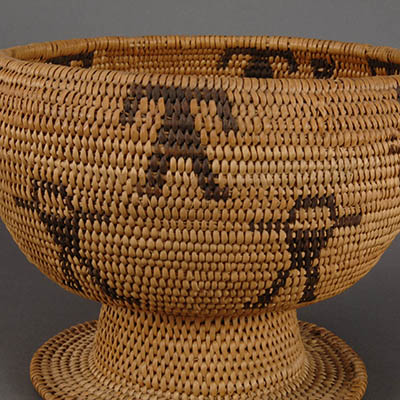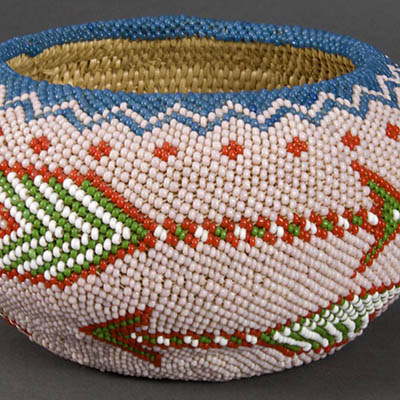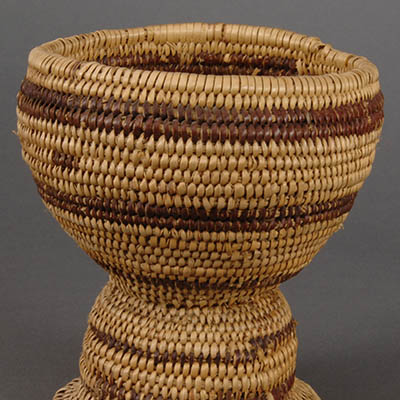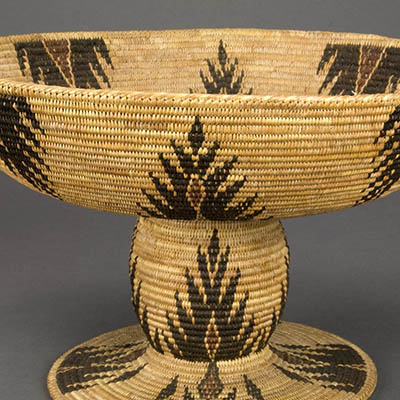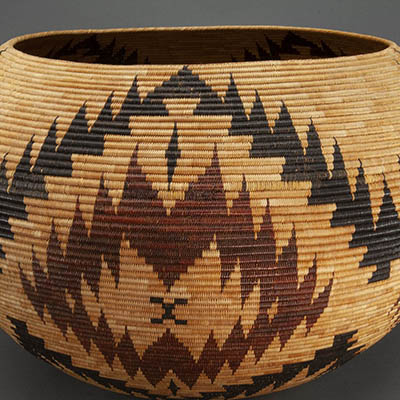Tourism
Baskets have long been a trade commodity in the Yosemite region. The seven Traditionally Associated Tribes of Yosemite traded baskets with each other, and with many other California tribes as well. As tourism to Yosemite Valley increased in the mid- to late-19th century, so too did an appreciation for the artistry and skill of local weavers. By the mid-1890s, the sale of baskets and beadwork to tourists and collectors alike had become commonplace. Interest in Yosemite basketry continued to grow through the turn of the century. Weavers soon began to experiment with new basket shapes, sizes, and design elements. While some baskets, such as traditional Miwok baskets, were decorated with redbud or bracken fern root, new-style “fancy” baskets had complex designs using both. Baskets also took on new shapes and features including pedestals and lids. Miniature, beaded, and yarn baskets began to make an appearance as well.
Tourism waned as World War I captured the world’s attention. To draw visitors to the park, Yosemite established the Indian Field Days, a culturally insensitive rodeo, pageant, and fair that encouraged American Indian stereotypes, occurring annually from 1916 to 1926 and again in 1929. One of the main attractions of this fair was the basketry competition in which several Yosemite-area weavers were regular participants. In addition to competing, they also exhibited and sold baskets and demonstrated basket weaving. Similar fairs popped up in neighboring communities including the June Lake Field Days and the Bishop Harvest Days. In 1939, the Golden Gate International Exposition in San Francisco included a demonstration and exhibition tent for basketry and other American Indian wares.

